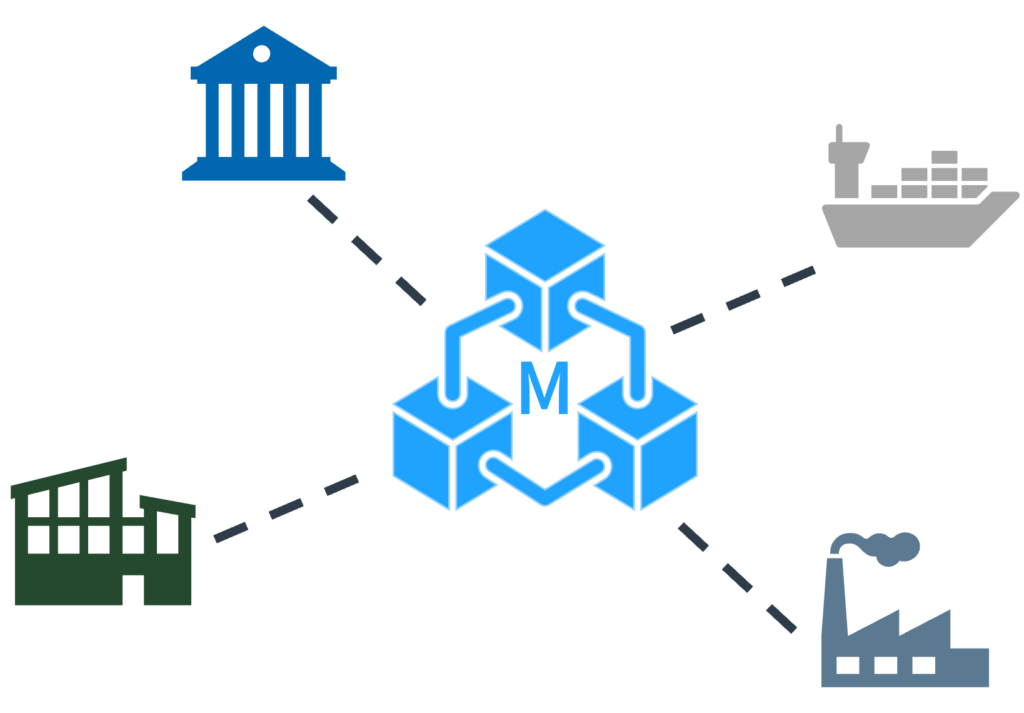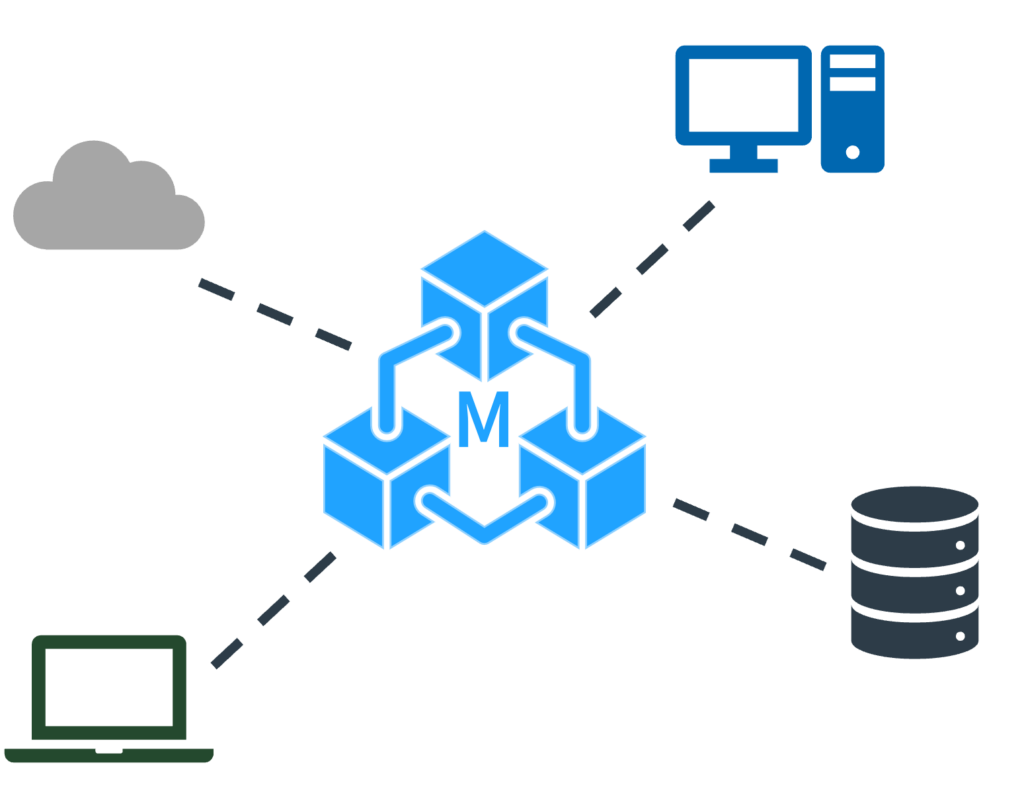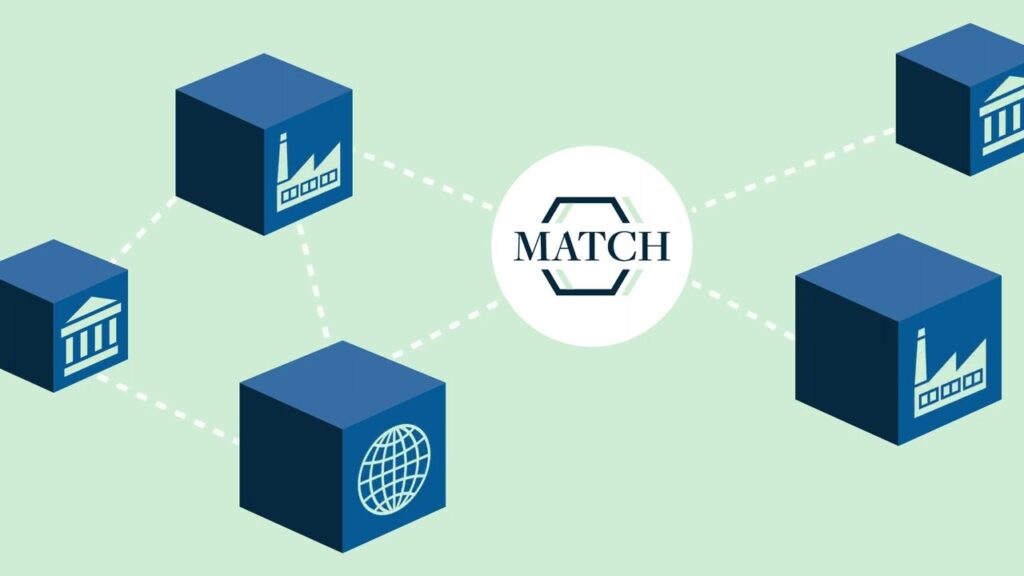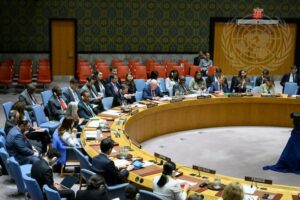The MATCH ‘2.0’ DLT Proof-of-concept
The Monitoring and Tracking Chemicals (MATCH) proof-of-concept is a prototype software system that demonstrates how distributed ledger technology (DLT) can make the process of regulatory compliance more efficient for the global chemical industry and support national authorities in identifying and reconciling discrepancies in declared transfers of commonly traded dual-use chemicals. These “dual-use” chemicals have both peaceful commercial and industrial uses but are also precursors to chemical weapons and subject to export controls and reporting requirements under the Chemical Weapons Convention.
The MATCH platform supports a fictional ecosystem of chemical industry participants, national authorities, and a “World Authority.” Industry participants report quantities of transferred dual-use chemicals to their respective national authorities. National authorities aggregate these reported quantities of chemical trade for their subsequent annual declaration to an international regulator referred to as the “World Authority.” In MATCH’s fictional ecosystem, the World Authority loosely represents the real-world Organisation for the Prohibition of Chemical Weapons (OPCW).
The MATCH project began in September 2021 and the second iteration of project development will conclude in January 2025. The MATCH 2.0 proof-of-concept is being developed with financial contribution by Global Affairs Canada’s Weapons Threat Reduction Program.
The MATCH ‘2.0’ Design Principles
DECENTRALIZATION
The MATCH ‘2.0’ proof-of-concept will operate using a fully distributed and decentralized digital ledger. Like previous versions of MATCH, the ‘2.0’ prototype will allow participants to publish and transact data in the form of replicated, cryptographically validated transactions using a DLT platform. Unlike most traditional platforms, DLT platforms do not process data through a centralized system or server governed by a single participant. Rather, the process of storing and sharing data is governed by a network of independent participants to establish consensus around the authenticity and provenance of transactions. MATCH ‘2.0’ will improve upon the operation of the original prototype by streamlining each participant’s individual access to the DLT platform and by providing a more robust method of partitioning each participant’s private storage and user experience, ensuring the privacy and security of user data.

Permissions/Access Controls
Like previous iterations of the MATCH prototype, MATCH ‘2.0’ will employ strict permissions, or access controls, to govern the participation of the platform’s various participants. The MATCH ‘2.0’ platform will include new types of participants who perform unique roles within end-to-end chemical trade processes, as well as new actions that can be taken by existing participants, like industry users and national authorities. Therefore, MATCH ‘2.0’ must also enforce more robust and complex permissions and restrictions on the level of access and actions that can be performed by each user.

Verification
One of the primary benefits of employing DLT is its ability to record and store encrypted data both immutably and verifiably. Data exchanged between MATCH participants is hashed, permanently stored, continuously duplicated, and distributed throughout a network. The MATCH ‘2.0’ platform will further incorporate DLT’s trademark auditability into the user experience, improving upon the original proof-of-concept by providing full provenance of each record and its corresponding hash on the platform directly within the user interface.

Scalability
International chemical trade is complex, dynamic, and involves a diversity of different stakeholder groups that are constantly expanding as global markets grow. Previous iterations of the MATCH platform were tailor-built to accommodate a specific number of participants occupying three unique roles (industry participants, national authorities, and an international regulator). MATCH ‘2.0’ will be built with scalability, flexibility, and future expansion in mind. Not only will MATCH ‘2.0’ include new types of participants and an expanded database of dual-use chemicals, the platform’s architecture will be built upon the principle of scalability – hypothetically allowing any number of new participants to join and participate in the MATCH ecosystem in-line with existing permissions and access controls.

Interoperability
In the real world, chemical industries and national authorities use a variety of data management software to track trade documentation, such as invoices, customs duties, and financial records. Developing a platform universally compatible with the plethora of software already in use around the world is not feasible within the constraints of this demonstration project. However, by allowing the export and import of data in a variety of file types, MATCH ‘2.0’ will achieve a much greater degree of interoperability by minimizing the effort needed to share data from MATCH with other systems. Using the MATCH ‘2.0’ interface, participants will be able to export chemical trade data and declaration forms using various common file types, including XML, TXT, JSON, and PDF to demonstrate potential interoperability with other popular data management platforms.

Leveraging DLT to Foster Cooperation Between Industry and National Authorities
The primary design principles of the MATCH ‘2.0’ project were derived from the feedback received during demonstrations and testing of the first prototype, and will guide the development of MATCH from previous versions to a more fully realized platform that demonstrates the potential benefits and capabilities of DLT for both chemical industry and national authorities. Stimson’s MATCH project team and developers will follow these principles in expanding the earlier prototype to include new features, functionalities, and greater utility, and by fundamentally restructuring and streamlining the previous system’s architecture to allow for greater potential scalability and interoperability. Iterating on the previous prototype, MATCH ‘2.0’ will demonstrate how DLT can be leveraged by industry, national authorities, and regulators to identify and resolve potential transfer discrepancies before they are declared, while significantly increasing the efficiency and accuracy of regulatory reporting on international transfers of dual-use chemicals.




